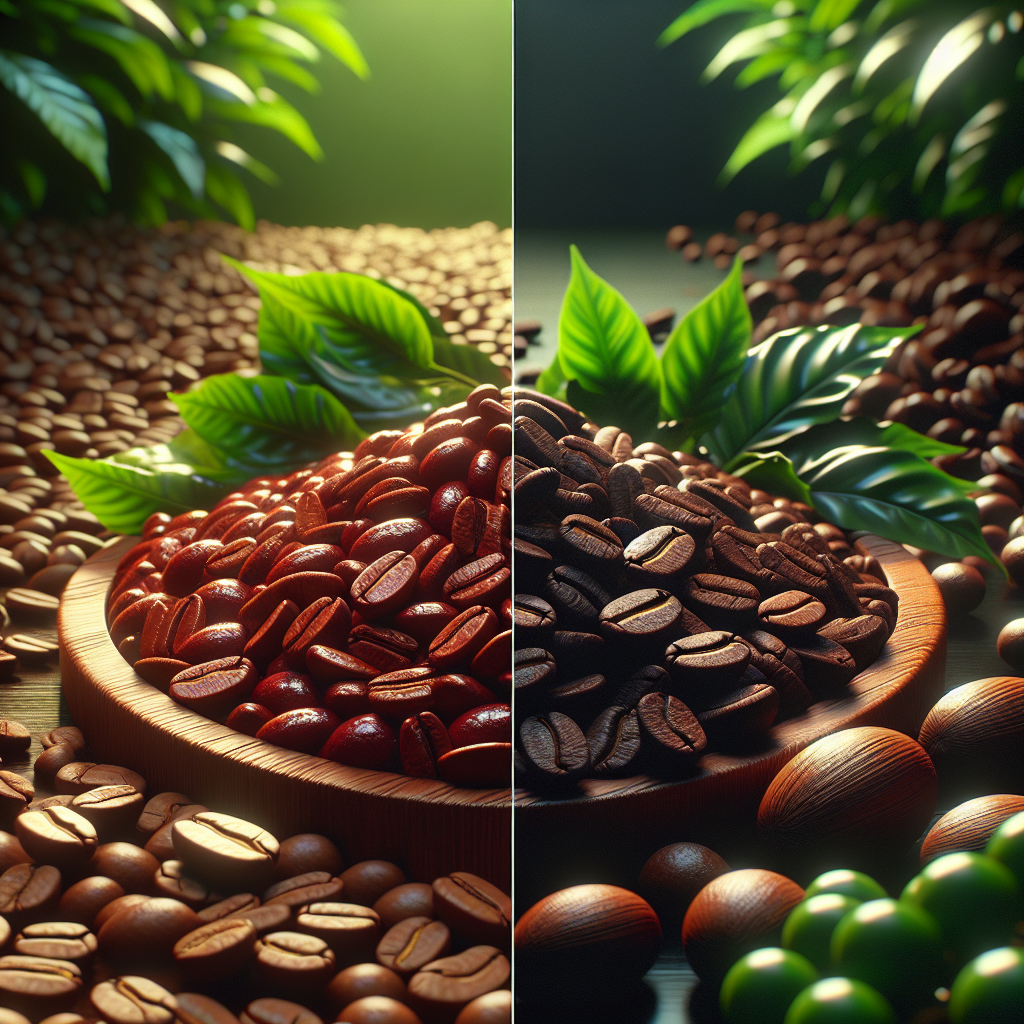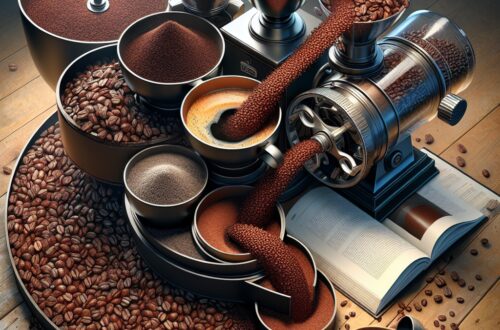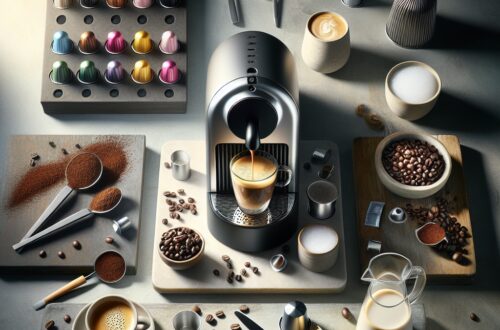“`html
Comprehensive Guide to Understanding the Difference Between Arabica and Robusta Coffee Beans
Coffee is more than just a morning beverage; it’s a global ritual enjoyed by millions daily. But when it comes to your cup, do you know whether you’re sipping on Arabica or Robusta? Understanding the differences between these two primary coffee bean types can elevate your coffee experience. This guide will cover flavor profiles, caffeine content, growing conditions, and more to help you make an informed choice.
| Coffee Bean Type | Flavor Profile | Notes |
|---|---|---|
| Arabica | Sweeter, milder, fruity | Occasionally sour |
| Robusta | Harsher, more bitter, dark chocolatety | Full-bodied, powerful flavor |
These flavor variances have significant impacts on consumer preference and coffee consumption, influencing the choice of brands and coffee products.
Flavor Profile Differences
When it comes to flavor, Arabica and Robusta beans offer distinct experiences. Arabica coffee beans are celebrated for their sweeter, milder taste with fruity undertones. Occasionally, you might notice a sour note which adds to its complex flavor profile. On the other hand, Robusta beans deliver a harsher, more bitter taste with dark chocolaty undertones, resulting in a full-bodied, powerful flavor. These differences significantly influence coffee consumption and brand preferences for many coffee aficionados.
Comparing Caffeine Content
One of the notable differences between Arabica and Robusta beans is their caffeine content. Arabica beans generally have about 1.5% caffeine, whereas Robusta beans pack a stronger punch with up to 2.7% caffeine. The higher caffeine content in Robusta not only contributes to its bitterness but also has a noticeable impact on the wakefulness and alertness of its consumers. Those seeking a stronger, more bitter coffee often lean towards Robusta, while Arabica’s milder caffeine content appeals to those preferring a less intense brew.
Shape and Appearance Distinctions
In terms of appearance, Arabica beans tend to be oval-shaped and lighter brown, whereas Robusta beans are rounder and darker with a more robust look. These visual characteristics not only affect processing methods but also influence consumer buying decisions. Coffee enthusiasts often rely on shape and color as quick indicators of the bean type. Additionally, roast level can affect a bean’s appearance, further complicating visual identification for the untrained eye.
Growing Conditions and Their Impact
Arabica and Robusta also differ significantly in their growing conditions. Arabica plants thrive at higher altitudes, typically between 3,000 to 6,000 feet, while Robusta plants grow at much lower elevations, ranging between 600 to 2000 meters. Robusta’s resilience to harsh weather conditions makes it easier to cultivate, resulting in higher yields. Meanwhile, the higher altitude required for Arabica contributes to its superior quality but lower yield. These conditions impact global coffee supply chains and influence the price variability between the two beans.
Plant Characteristics and Agricultural Insights
Arabica and Robusta plants also differ in their physical characteristics. Arabica plants are generally shorter, between 2.5 to 4.5 meters high, while Robusta plants can reach up to 6 meters. These differences affect the harvesting methods, with Arabica often being more labor-intensive to pick. Additionally, Robusta plants exhibit higher disease resistance compared to the more susceptible Arabica, influencing production costs and cultivation practices. Farmers and larger coffee producers need to consider these factors when choosing which type to grow.
Yield, Production, and Economic Implications
Robusta plants generally yield more coffee beans compared to Arabica plants, making them economically attractive for large-scale production. Robusta accounts for about 40% of the global coffee production, while the high-quality Arabica beans make up over 60%. The economic implications of these yield differences are significant, influencing global coffee prices and market trends. Farmers often employ various strategies to maximize their yield, balancing the quality and economic benefits of each bean type.
Aroma and Its Sensory Appeal
Aroma is another significant factor differentiating Arabica from Robusta. Arabica beans are known for their more developed and pleasant aroma, often considered superior to Robusta’s milder scent. The aromatic compounds present in Arabica beans contribute to its high-quality perception and enhance the overall coffee-tasting experience. Aroma plays a crucial role in consumer perception and is a key feature in specialty coffees.
Price Variability and Market Dynamics
Arabica beans are generally more expensive than Robusta due to their selective growing conditions and lower yield. The higher cost of Arabica beans positions them as a premium choice in the market, while Robusta is seen as more cost-effective. This price variability plays a significant role in consumer choice, with premium and budget segments of the coffee market being driven by these differences. Economic benefits for countries producing these beans also vary, impacting their long-term pricing outlook.
Usage in Coffee Products
Robusta beans are commonly used in instant coffee and espresso blends due to their strong flavor and higher caffeine content. On the other hand, Arabica beans are favored in specialty coffees and brewed drinks for their superior taste. Blending practices often combine both types to balance flavor and caffeine content, resulting in a variety of commercially popular products. These usage patterns impact the overall coffee experience, catering to diverse consumer preferences.
Quality Perception in the Coffee Community
The coffee community generally perceives Arabica as higher quality due to its refined flavor and growing conditions. However, Robusta, despite being more economical, holds a unique appeal for many coffee drinkers. The market’s view of quality can often be influenced by marketing and consumer trends. Moreover, innovations and advancements in coffee cultivation and processing are improving Robusta’s quality profile, balancing taste, quality, and affordability.
As you explore the intricate differences between Arabica and Robusta coffee beans, it becomes clear that each has its unique strengths and appeal. Whether you prefer the sweeter, milder taste of Arabica or the robust, powerful flavor of Robusta, both have their place in the diverse world of coffee.
If you’re interested in diving deeper into the world of coffee, check out our comprehensive FAQ on coffee here.
For coffee enthusiasts seeking more insights, our blog offers a wealth of information and interesting reads. Discover more about your favorite beverage today!
“`
Shop at Breville now!
https://breville.oie8.net/oqDqrE
Shop Coffee Machine at Amazon now!
Click here!





